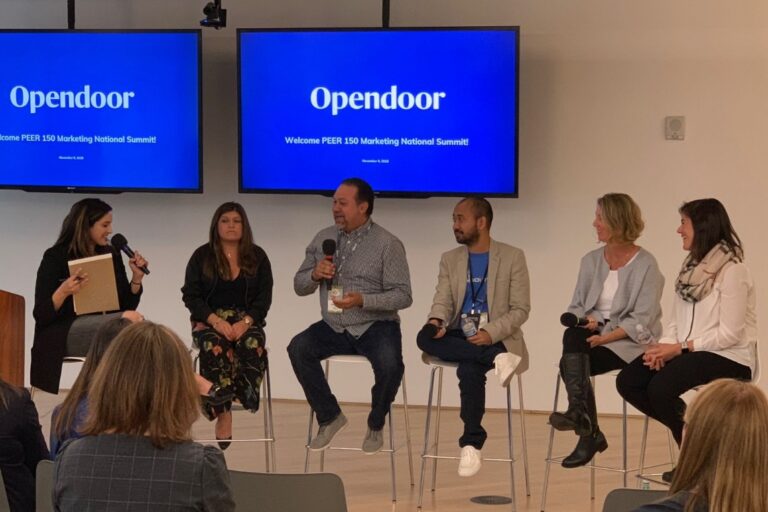Proptech Giant: Zillow Hits a Home Run with Their Excellent Performance
Diving into the real tech industry, it’s not surprising about the name Zillow which holding the top spot in this area. Zillow is the biggest player in web-based real estate, prevailing over other competitors with 75% of mobile real estate searches displaying on its different platforms.
As the most visited brands of United States for searching homes, mortgages and real estate, Zillow initially offers the updated value estimates of homes, aerial views of homes, comparable prices of different homes within the area. Up to now, Zillow has expanded its services to comprise the rental market which can be searched for both rental homes and homes for sale.
Having grown to be the Proptech giant, Zillow has climbed up the ladder to be on top through the thirteen-year journey since its startups in 2006. Today, the company gains about $1.334 billion of annual revenue and owns over $9 billion market cap. The company went public with about 300 employees and extended to the number of 4,336 in 2018, according to Macrotrends. It is almost 15 times compared to the starting point which is amazing. So, what was the magic touch that had driven Zillow to its miraculous achievement? Let’s read on to discover!
The Magic Touch That Had Driven Zillow to Its Miraculous Achievement
Before getting into what lead to Zillow success, we take a brief look at the company thirteen-year journey as below:

1st Mover advantage: innovative idea turns Zillow into the proptech giant
In 2005, Rich Barton and Lloyd Frink begin assembling a team to revolutionize the way people search and shop for homes (Zillow Group). Zillow officially went public in 2006 and founded by Rich Barton and Lloyd Frink, a longtime executive from Microsoft and Expedia, and Spencer Rascoff, a co-founder of Hotwire.com.

The idea came from the thought that “One of the hardest things about when you’re selling a home is trying to figure out the price of a home” and “We thought about being the real estate agent, being the brokerage ourselves. We spent weeks, months doing this project and getting it up and going, and we figured out pretty quickly that there’s a lot of value that real estate agents add and brokers add that was not our area of expertise” ( Lloyd Frink sharing).
Starting with the initial purpose that providing the consumer with information as the real estate agent, they develop further by the unique idea of “Imagine a price on every roof” in which the Zestimate produced. Coming up with this idea, they want to estimate what every house in the country is worth and processing by acquiring information such as bed, bath, square footage, tax assessment, sale history then digitize it and build the data layer ( Rascoff sharing).
Hence, the first product, Zestimate, was launched on the day the company went public. Surprisingly, they created a hit by attracting over million visitors by the second day and double by the fifth day and the site crashed.

Taking the first-mover advantage with Zestimate innovation, they have the capacity to tap into the consumer first which makes a strong impression, lead to brand loyalty and recognition. Thus, this innovative idea as the first jump into the Proptech area and transform Zillow into the giant in Proptech.
The mutual-benefit exchange platforms: leveraging indirect network effects
The business appeals to visitors and users to its website and mobile apps. Afterward, utilizing the data from users’ browsing behaviors, the company makes a profit on selling services and highly targeted advertising to a variety of businesses. The more users come to them, the more listing and advertising revenues they made and broader access to both listings and real estate professionals, in turn, attracts more users.
Zillow strategically gives away data and tools. It means they offer free information and tools in order to draw more owners, buyers, and renters to its platform. In practice, Zillow users can post or view home listings for free, and they have unfettered access to public square footage and sale data on homes and land, even when they are not on the market.
In addition, more services are provided for free such as Zestimate for estimating home’s value in the market, Zillow Advice for reading and asking about buying or selling home, Zillow Agent Finder for seeking real estate agent, Zillow Mortgage Marketplace for customizing mortgage quotes, Zillow Mortgage Calculator, Zillow Home Design for getting ideas of home redesigns. When the engagement of users starts with these free tools, Zillow gains the information of their behaviors and showing them additional advertised listings, so do the best local professionals who can ultimately help with their sale or purchase.
Last but not least, taking advantage of the massive audience, Zillow sells quailed leads, advertising space, and CRM services to many companies. For example, they charge money on services such as listing vacancies for property management companies to acquire qualified leads; a per-click basis for highly targeted advertising space in the results for mortgage lenders to reach users when they search for custom mortgage quotes and so on. This platform brings a significant amount of revenues to the firm and contributes to its success.
Business strategy: changing the playing field in the real estate industry as all roads lead to Zillow.
Whereas the parent company is prominent with its brand name, the nine brands that actually belong to Zillow are less likely to be recognized which are Trulia, StreetEasy, Hotpads, Naked Apartment, Out East, Mortech, Dotloop, Zillow Primer Agent and Bridge Interactive. However, these brands are the illustrations of highly strategic acquisitions as all roads lead to Zillow.

The highly acquisitive strategy of the company has been applied the same for years which is at least one acquisition per year with three apparent types of targets in mind: companies with strong local listings, platform enhancing technologies, and new user groups.
Firstly, when those companies have built up a strong subset of local listings, Zillow has been ready to pounce and buy up its competition. Take the case in 2013 as an example, Zillow spent $50 million to buy StreetEasy, a rising player in the New York apartment rental market.
Secondly, Zillow Group has acquired companies that have built platform-enhancing innovations. For example, Dotloop, a software company that eliminates transaction paperwork for agents and buyers which helps Zillow to track transactions and give feedback to its Premier Agents with data showing how advertising links to more closed sales, has been acquired by Zillow with $108 million. Similarly, HotPads, a player in the map-based real estate search display, has been acquired with $16 million. Finally, in terms of acquiring companies for their users, Zillow spent $3.5 billion in 2015 to acquire its single largest competitor, Trulia.
The key to these acquisition strategies was to lead all back to create Zillow an easy path for clients to grow their businesses. Therefore, while the company has the resources and offerings that smaller players cannot replicate on an individual basis, outsourcing to Zillow becomes an obvious choice.
Acquiring the diverse brands complementary to its core business has formed a dominant hub for U.S.-based real estate internet traffic for Zillow Group. Further, leaving its various consumer-facing platforms intact, Zillow can appeal to customers without requiring changing their shopping habits. Staying the same, its sales force can sell access by site or across platforms and real estate agents can advertise based on their budget and needs. Likewise, its business brands further integrate themselves into the industry by making a one-stop-shop with various back-office functions for their customers.

The Proptech Giant’s Competitors
Joining in this particular race, many competitors find themselves falling behind Zillow. However, Redfin, a large online real estate company that looks for redesigning the way people buy homes, has become a viable alternative to Zillow which also is Zillow’s primary competitor. From various perspectives, Zillow and Redfin are heading toward the same destination, from various directions. Zillow has developed dramatically in its business, while Redfin is adding new business platforms in a more incremental way.

Zillow stunned the industry back in February when it proclaimed it would concentrate mostly on its energy of purchasing and selling homes directly. In the traditional way, Zillow’s meat and potatoes have been offering media and advertising for brokers and agents. Presently it has the ambition of taking control of the entire real estate process which consists of turning into a major mortgage lender and down the road offering services like title and escrow and moving.
Although launching its homebuying and -selling product Redfin Now in 2017 -a whole year before Zillow Offers, Redfin Now booked segment revenue of $80 million, compared to $385 million for Zillow Offers over the Q3. That’s how Zillow’s web presence powers exist as a giant in the market which should allow the company to grow market share exponentially.
Catching up with a year later, Zillow Offers has quickly extended to 21 markets while RedfinNow was active in only 10 markets by Q3. Worth considering the number of unique users, Zillow prevails over Redfin with its average of 196 million monthly users whereas Redfin’s total monthly average visitors were 37 million. In comparison to Redfin, Zillow is a relative giant. Redfin doesn’t have the acknowledgment to keep pace.

The top alternatives to Zillow
Zillow and Redfin are not racing this competition alone, there are other players entering progressively. While Zillow and Redfin are popular real estate sites, excellent alternatives do exist.
#1. Homesnap
Homesnap is an online real estate website that provides users the intuitive map-based search function and a robust amount of property information. Much like Zillow and Trulia, its real estate browse function is simplified to use.
Staying apart from the competition, Homesnap differentiates its brands with the mobile app which possibly takes a real-time image of selling home and providing all the desired listing information about the property.
More than that, the app gives additional features for unlisted homes, apartments, and condos, giving users property values of the units. Users can easily use the app in a different version with the available installation for Android, iPhone, Apple Watch, and Apple TV users.
#2. NeighborhoodScout
NeighborhoodScout includes features such as giving free information related to neighborhoods in the United States. In other words, users are allowed to access the company’s neighborhood information by searching for a city or specific address. When the needed information is entered, the system automatically provides average house values, demographic data, crime rates, local school information, traffic data, and more.
Despite the free given information, a subscription is needed for some of the more robust data. With the monthly payment of $39.99, users are provided with crime rates, housing appreciation rates, and detailed school reports.
Though, the information presented to users through NeighborhoodScout’s subscription service is not proposed by either Zillow or Trulia which setting a viable alternative to either company.
#3. Realtor.com
Unlike the above platforms, Realtor.com is more basic and doesn’t have those robust features. It is an online real estate website owned by News Corp which licenses its name “realtor” from the National Association of Realtors.
However, it’s associated with MLS (Multiple Listing Service) with the most updated listings on the market and is a good recommendation for starting to search for a home. Additionally, it also facilitates users with the function of texting to connect to real estate professionals and a pricing feature to assess how specific home features, such as a garage, affect cost.
The Bottom Lines
Zillow’s success can be accounted to its innovative ideas, the smart business platform, and its technology. Having grown to be the Proptech giant, Zillow has chosen the highly acquisitive business strategy which also proves itself to be the toughest competitor to hit on.
If you’re not ready for your business, Zillow is definitely a good case for you to learn from or just simply leave us a text for help!









